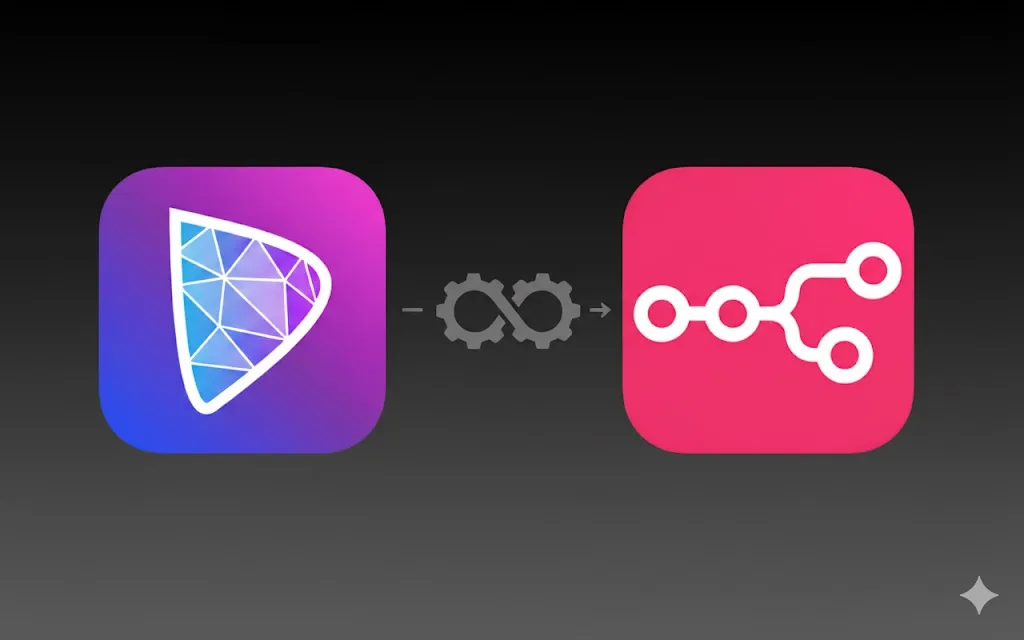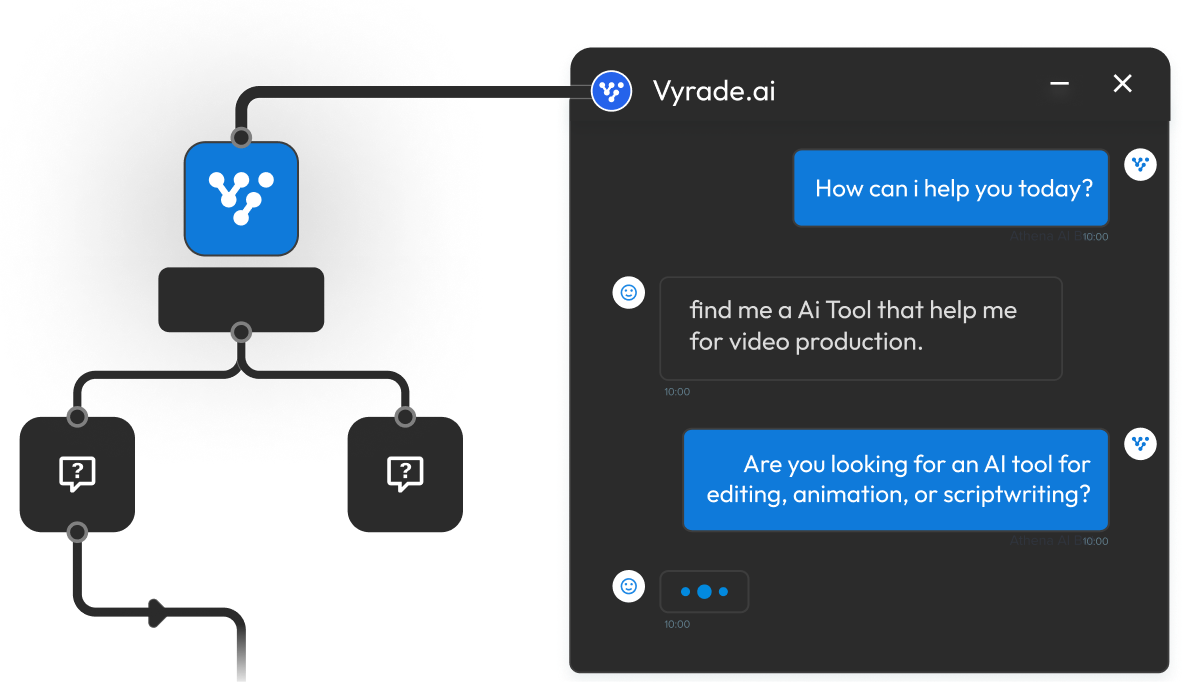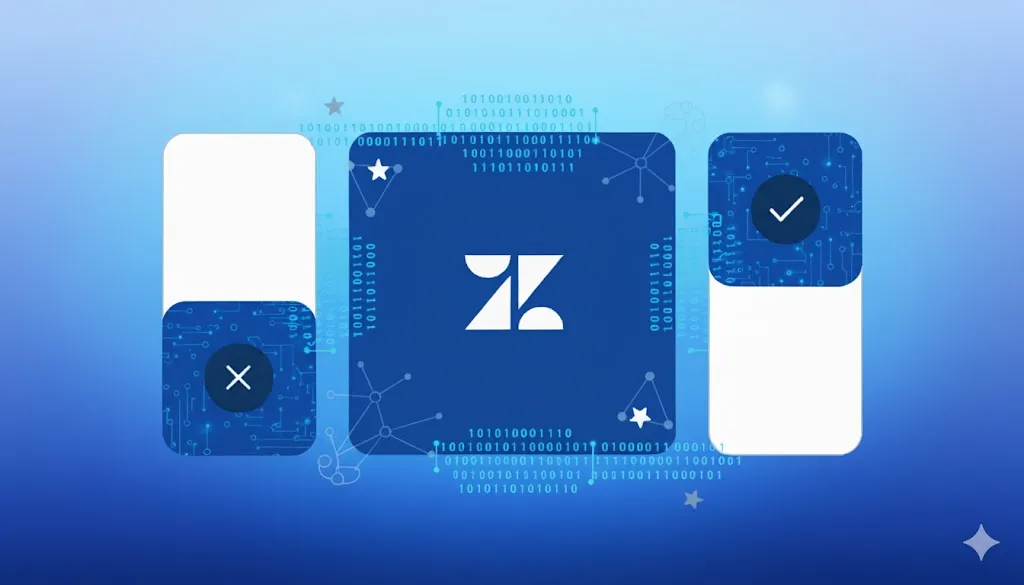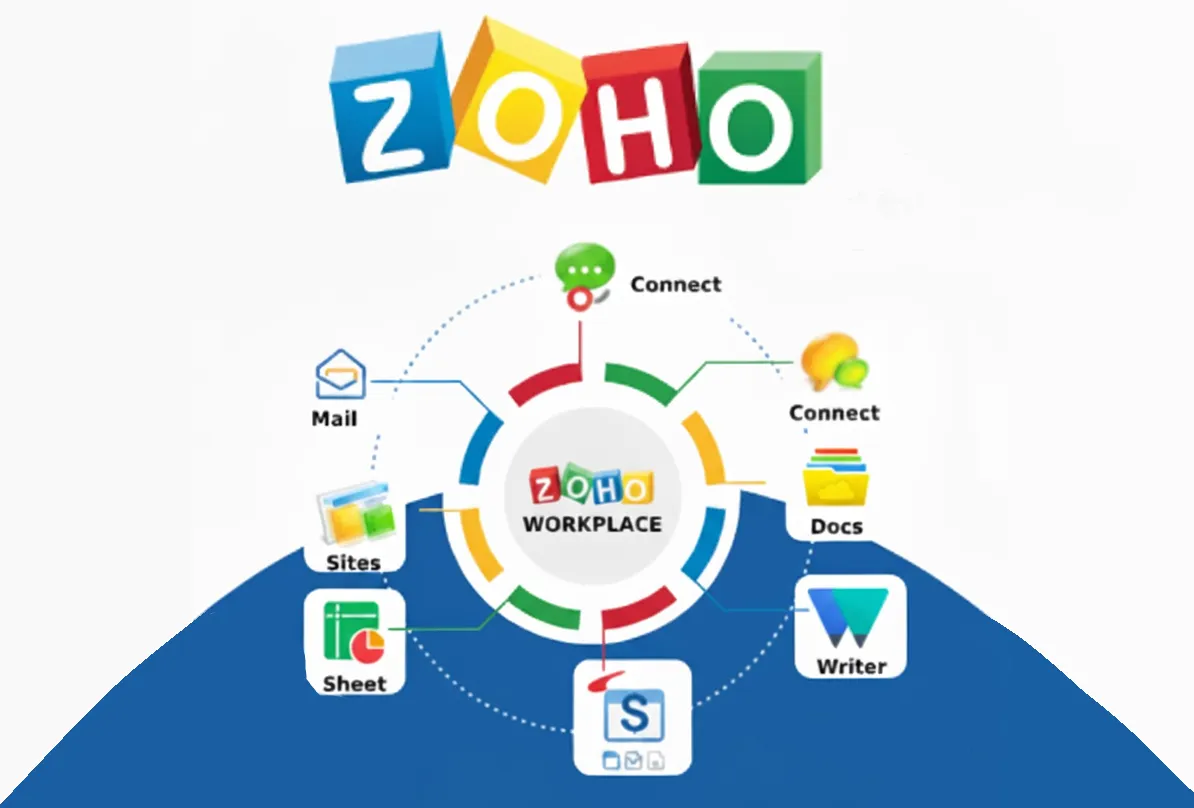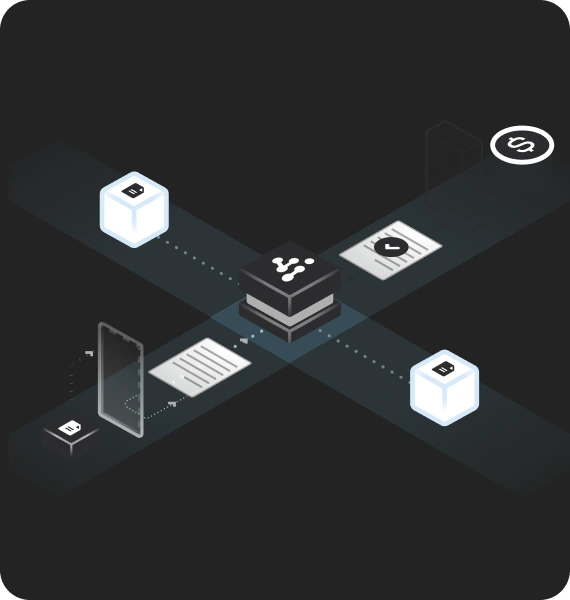Monitoring decentralized activity on Nostr is increasingly important, and Damus, one of its most widely used clients has become a key space where users share product feedback, onboarding issues, relay performance notes, and discussions on privacy, wallets, and interface expectations. Yet, because insights are scattered across relays, often unthreaded, and not ranked or organized, valuable signals can be hard to track and quickly lost. This workflow solves that challenge by automatically collecting Damus-related content, extracting themes with LLMs, formatting insights into structured HTML reports, and delivering them to Gmail and Telegram for fast review.
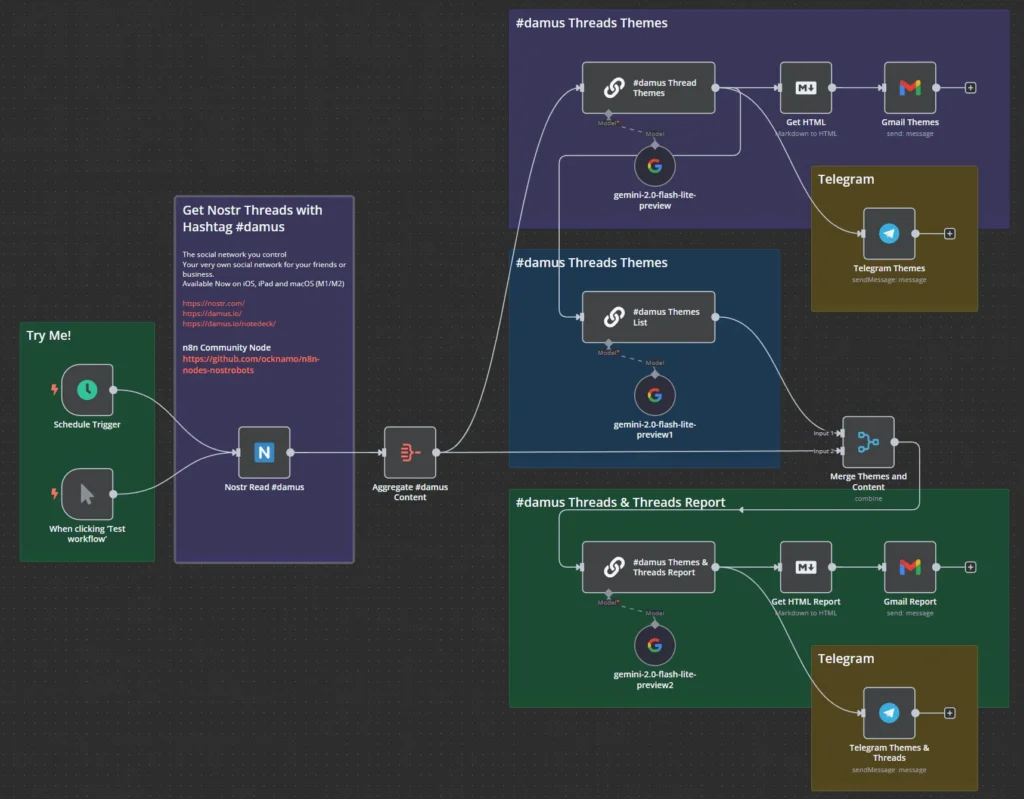
Why Automate Nostr and Damus Monitoring
Unlike traditional social platforms, Nostr provides no central index. Content is spread across multiple relays, each with its own availability and data retention. Individual users join from heterogeneous clients, generating an uncurated information flow that is difficult to monitor in real time.
Organizations that rely on Nostr interactions for product direction, ecosystem research, or community management face several challenges:
- Difficult access to high-value conversations
- No consistent mechanism to retrieve and analyze posts over time
- Unpredictable data structure
- High noise-to-signal ratio
Automation solves these issues by enabling structured intelligence without requiring teams to constantly monitor decentralized feeds manually. It allows stakeholders to receive curated insights, product signals, and emerging topics without losing context or spending hours browsing.
Want to skip setup and go straight to results?
💡Get a Custom n8n Workflow Built for You by Vyrade, designed, tested, and AI-optimized to fit your exact business stack.
Download & Inspect the JSON Workflow
If you prefer starting from a ready-made workflow instead of building from scratch, here’s a preconfigured JSON file for n8n that automatically creates workflow. You can import it directly into your workspace and customize field mappings to your needs.
The Automated Monitoring Workflow
Automating Damus monitoring solves these issues through a structured pipeline that captures, analyzes, formats, and distributes information.
Step 1: Collect Damus Conversations from Nost
The workflow starts by reading posts that reference Damus. It uses a configurable time window, such as three hours, to capture fresh activity throughout the day. The system then stores all extracted text and metadata for further analysis.
This collection step solves the discovery problem by consolidating decentralized content into a single source.
Step 2: Aggregate Content for Context
The workflow combines individual posts into a single unit, giving large-language models enough context to identify relationships across messages. This aggregation allows the model to cluster discussions and extract themes that would be difficult to detect if it analyzed posts separately.
Step 3: Identify Major Themes
The first pass of LLM processing detects primary themes, allowing analysts to quickly see what users are discussing most frequently. These themes may include onboarding issues, wallet integration challenges, relay reliability, interface improvements, developer concerns, or privacy discussions.
The output forms a top-level summary that acts as an index for the full report.
Step 4: Deep Contextual Analysis
A second LLM pass provides detailed interpretation. At this stage, the report explores motivations behind user conversations, tone, concerns, expectations, and specific examples. The model reveals whether posts represent frustration, enthusiasm, requests, or philosophical commentary.
This structured analysis gives product teams the context required to interpret meaning rather than just raw text.
Step 5: Convert to Structured HTML
The workflow formats the results in Markdown and converts them into HTML, making them easy to read in email clients, internal documentation platforms, dashboards, or shared knowledge bases.
The structured format ensures reports are accessible and ready for analysis without further manual formatting.
Step 6: Deliver Insights to Gmail and Telegram
The workflow emails reports for asynchronous review and sends summaries to Telegram for real-time updates. This combination helps teams stay aware of ongoing activity and respond quickly.
Teams can also route reports to Slack, Discord, dashboards, or ticketing systems such as Jira or Linear.
Analytical Layers in This Workflow
Beyond basic summarization, this workflow provides multidimensional analysis that helps teams understand both what users are saying and why.
It identifies user intention (feedback, support request, comparison, inquiry) and determines experience level, distinguishing between experienced Nostr users, developers, and newcomers. It also highlights recurring concerns such as account onboarding, relay selection, and client performance.
Over time, accumulated analysis can reveal sentiment trends, topic frequency, product adoption signals, and important directional changes.
What This Workflow Monitors
This workflow gathers Damus-related posts from Nostr and consolidates them into a single processing stream. Conversations frequently involve product suggestions, UX commentary, developer feedback, privacy concerns, and relay performance. Posts are then analyzed to determine dominant themes, contextual meaning, sentiment, and potential actions.
Because the workflow pulls unfiltered posts, it also captures contextual observations that teams often overlook, including onboarding challenges, wallet-related friction, performance differences across mobile interfaces, and user migration patterns from other platforms.
Over time, this process creates a reliable record of how Damus evolves through community input.
Who Benefits From Damus Nostr Intelligence
This workflow is valuable to several groups working within or adjacent to decentralized ecosystems.
Product teams gain visibility into top user concerns and product expectations. Community managers can understand emerging mood shifts and communication gaps. Researchers studying decentralized social systems can observe behavior patterns, adoption signals, and engagement triggers. Founders can monitor competitive comparisons and tune messaging accordingly.
This makes continuous Damus monitoring relevant for product strategy, engineering roadmaps, community support, and research disciplines.
The Limitations of Manual Monitoring
Tracking conversations on Nostr manually is ineffective for several reasons.
Most posts disappear quickly, so teams lose insights without persistent monitoring. Conversations lack central threading, so related discussions often spread across different relays with no linking structure. Searching remains inconsistent, and no single interface gives complete coverage.
Even when a user stumbles across important conversation fragments, summarizing them, classifying them, sharing them internally, and storing them for future reference requires substantial time and effort. Consistency is nearly impossible when multiple team members track the same topics.
This leads to incomplete visibility, slow response cycles, and fragmented knowledge.
Architecture Overview
This workflow integrates n8n automation, a Nostr reader, LLM-powered text analysis, and multiple delivery systems. Data enters the pipeline through the Nostr reader, flows through aggregation and analysis, and exits through formatted messaging.
Optional data storage layers allow for long-term retention and trend analysis. This structure supports both immediate insight delivery and strategic historical study.
Conclusion
Damus-focused conversations on Nostr offer immediate indicators of user sentiment, adoption friction, emerging features, and broader philosophical discussions. Without structured capture and analysis, these insights are quickly lost within decentralized streams.
By automating ingestion, aggregation, analysis, formatting, and delivery, this workflow turns unfiltered Nostr conversation into refined intelligence. Teams can make more informed decisions, develop clearer priorities, and build stronger alignment with real user needs.
This workflow is a scalable foundation for product research, community management, and decentralized-ecosystem study.
FAQs
Yes. The system can be expanded to track multiple terms or product names.
Sentiment interpretation can be included in the analysis pass or run as a dedicated step.
Yes. Delivery destinations are modular.
Raw data can be stored in Sheets, Notion, a SQL database, or a document archive.
This workflow can run through hosted n8n or a self-deployed instance.
